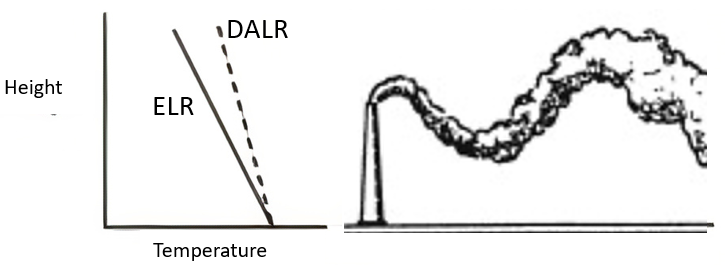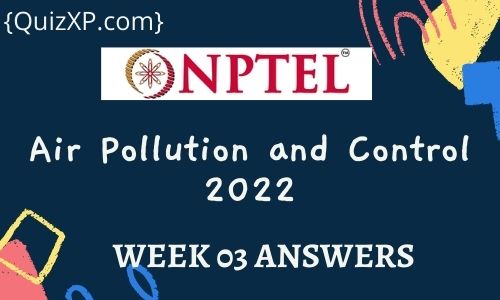Are you looking for the Answers to NPTEL Air Pollution and Control Assignment 3? This article will help you with the answer to the National Programme on Technology Enhanced Learning (NPTEL) Course “ Air Pollution and Control Assignment 3 “
What is Air Pollution and Control?
The objective of the course is to impart the knowledge and understanding of causes and effects of air pollution and their controlling mechanisms. The course will provide a deeper understanding of air pollutants, pollution inventory and modelling. The course also imparts knowledge on the impacts of air pollution on different aspects such as policy, human health and various contemporary technological innovation for betterment of air quality.
CRITERIA TO GET A CERTIFICATE
Average assignment score = 25% of the average of best 8 assignments out of the total 12 assignments given in the course.
Exam score = 75% of the proctored certification exam score out of 100
Final score = Average assignment score + Exam score
YOU WILL BE ELIGIBLE FOR A CERTIFICATE ONLY IF THE AVERAGE ASSIGNMENT SCORE >=10/25 AND EXAM SCORE >= 30/75. If one of the 2 criteria is not met, you will not get the certificate even if the Final score >= 40/100.
Below you can find the answers for NPTEL Air Pollution and Control Assignment 3
| Assignment No. | Answers |
|---|---|
| Air Pollution Assignment 1 | Click Here |
| Air Pollution Assignment 2 | Click Here |
| Air Pollution Assignment 3 | Click Here |
| Air Pollution Assignment 4 | Click Here |
NPTEL Air Pollution and Control Assignment 3 Answers:-
Q1. According to the Pasquill-Gifford stability classification, the stability class ‘E’ is:
(A) Very stable
(B) Slightly stable
(C) Slightly unstable
(D) Neutral
Answer:- b
Q2. Identify the type of plume based on the figure given below (DALR- Dry Adiabatic Lapse Rate and ELR – Environmental Lapse Rate):

(A) Looping
(B) Coning
(C) Fumigation
(D) Lofting
Answer:- a
Q3. The bottom 10 % of the atmospheric boundary layer is called as
(A) Surface layer
(B) Stable boundary layer
(C) Residual layer
(D) Mixed layer
Answer:- a
Q4. As per CPCB recommendations, the minimum value for chimney/stack height adopted for industries except for thermal power plant is ___________.
(A) 30 m
(B) 20 m
(C) 15 m
(D) 10 m
Answer:- a
???? Next Week Answers: Assignment 04 ????
Q5. _________ is the number of times monitoring data is obtained and recorded over a specified time interval.
(A) Measurement Techniques
(B) Indicator(s) of performance
(C) Monitoring Frequency
(D) Averaging time
Answer:- c
Q6. Cities in which the ambient air concentrations have consistently exceeded the National Ambient Air Quality Standards (NAAQS) for a period of 5 years are called as
(A) Attainment cities
(B) Non-attainment cities
(C) Megacities
(D) Green cities
Answer:- b
Q7. When an air pollution index gives a false alarm even though concentrations of all the pollutants are within the permissible limit except for one pollutant, it is called
(A) Eclipsing
(B) Ambiguity
(C) Maximum operator approach
(D) Minimum operator approach
Answer:- b
Q8. If AQI comes out to be 169, what would be the AQI category as per CPCB?
(A) Satisfactory
(B) Moderate
(C) Poor
(D) Severe
Answer:- b
Q9. Classification of air quality models based on the coordinate system is:
(A) Short-term and long-term models
(B) Reactive and non-reactive models
(C) Grid-based and trajectory models
(D) Screening and refined models
Answer:- c
Q10. Air Quality Modelling in Urban Regions using an Optimal Resolution Approach (AURORA) model is based on
(A) Box model
(B) Eulerian model
(C) Gaussian model
(D) Lagrangian model
Answer:- a
For other courses answers:- Visit
For Internship and job updates:- Visit
Disclaimer: We do not claim 100% surety of answers, these answers are based on our sole knowledge, and by posting these answers we are just trying to help students, so we urge do your assignment on your own.
if you have any suggestions then comment below or contact us at [email protected]
If you found this article Interesting and helpful, don’t forget to share it with your friends to get this information.


